The 4 Best Ways to Silence Your Saddle Hunting Gear
Consistently killing mature bucks hinges on being able to access spots close to bedding completely undetected. That means controlling your scent by playing the wind and remaining as quiet as possible.
You can do everything right for the 2-mile hike into that big buck’s bedroom, but one small clang of metal on metal during setup and it’s game over.
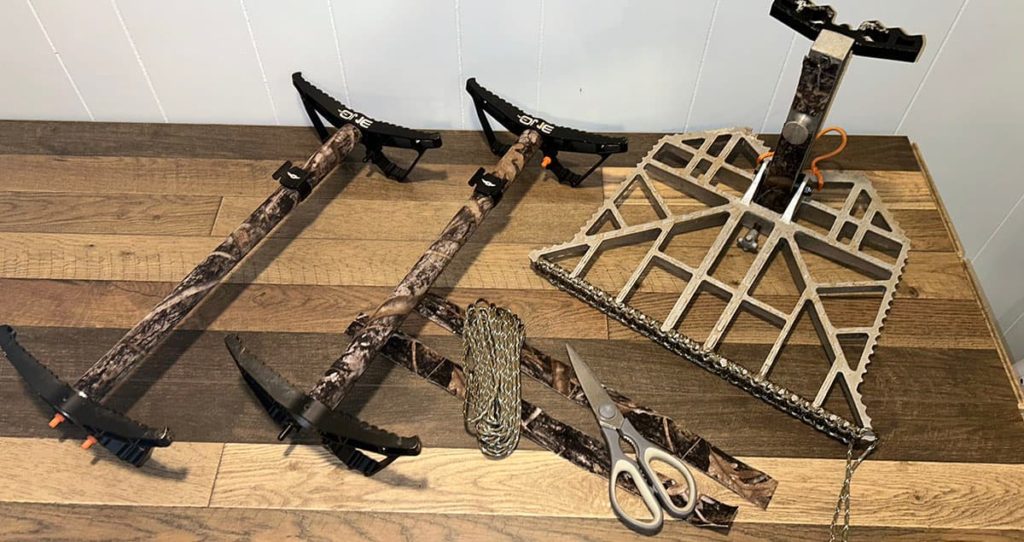
As a saddle hunter, you already have an advantage over those using climbers or hang-on stands. The lightweight, minimal gear makes it much easier to set up in silence, but the risk is still there.
With a few inexpensive additions to your gear, and an extra level of caution, you can ensure you stay silent, to help tip the odds of getting in close to your target buck in your favor. Let’s take a look at how to get your saddle hunting gear ready for next deer season.
1. Stealth Strips (or Hockey Tape)
The first stip to silencing your saddle hunting gear is to cover as much of the exposed metal as possible with some type of sound deadener. For years, items like cloth tape or hockey tape served this purpose for saddle hunters, but now there is a product on the market specifically for silencing your gear – Stealth Strips.
Stealth Strips is a durable, water resistant, peel-and-stick silencing material used to wrap a variety of hunting gear, including climbing sticks, platforms, carabiners, and about anything metal that may create noise in your setup.
For my gear, I have the tubes of my Tethrd One sticks wrapped, as well as the post on my Predator XL platform. I also wrapped my Muddy camera arm for when I film hunts.
Some guys wrap the edges of their platform in Stealth Strips as well, but I don’t think it would hold up very long to the wear and tear of your boots moving around on the platform. There’s a better option for that, which we’ll discuss below.
If you don’t have access to Stealth Strips or don’t want to spend the money for them, then something more readily available like hockey tape will work just fine. In fact, anything that will help deaden the metallic clang of your gear while holding up to outdoor elements should do the trick.
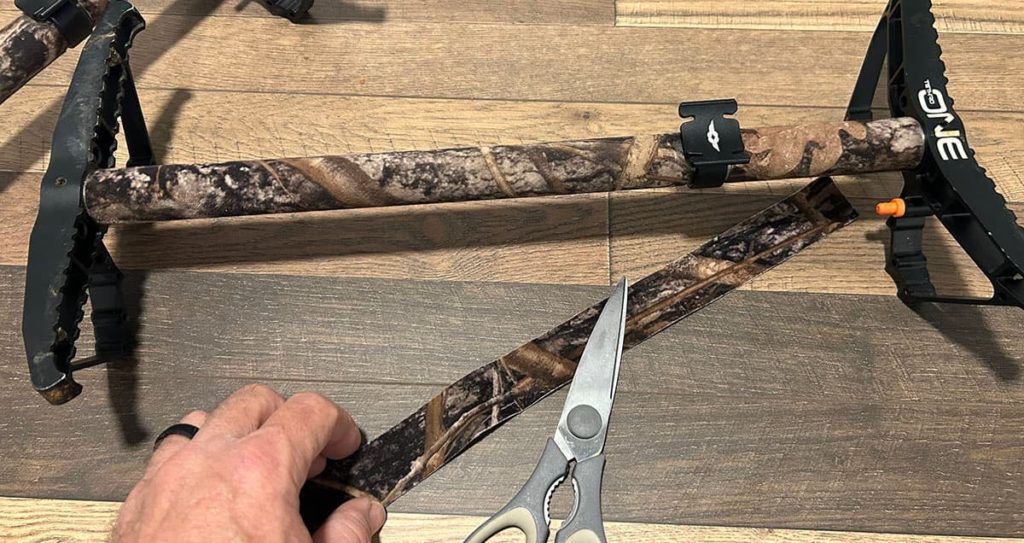
2. Paracord Your Platform
A relatively cheap alternative to wrapping the edge of your platform or the steps of your climbing sticks in Stealth Strips is to wrap them in paracord. This durable nylon cord can be be Cobra-weaved along the edges of your platform and steps to silence them if they come in contact with metal gear.
The paracord can also give you some added traction to an otherwise smooth surface, and some saddle hunters love being able to use the paracord to “feel” the edge of their platform.
If you decide to go this route, my advice is to not get too carried away with the paracord. Only cover areas that are prone to noise or potentially coming in contact with other gear. I say this because while paracord is weather resistant, any fabric like that is going to hold dirt, debris, and human scent. I’ve also heard guys complain about it staying wet for days at a time.
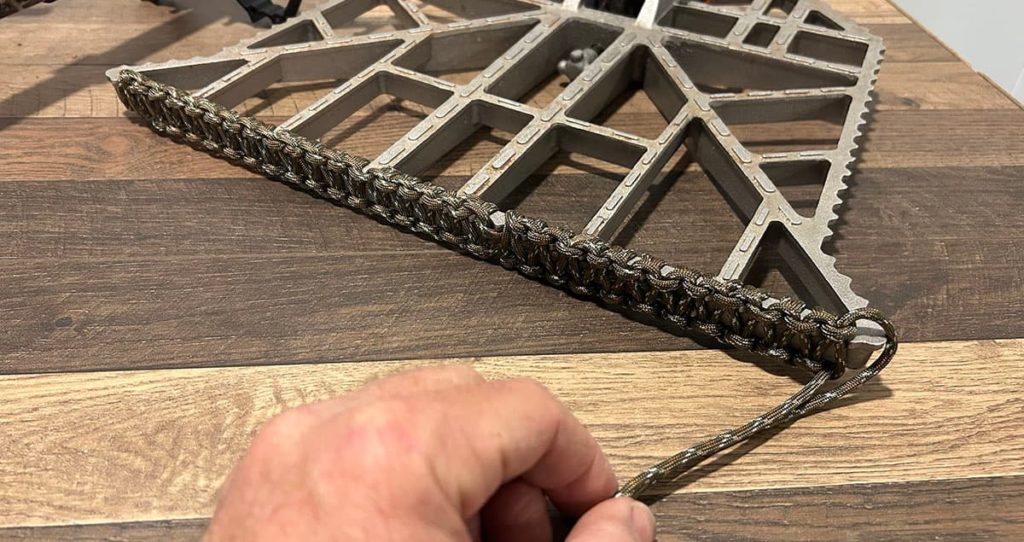
3. Lose the Metal Buckles
In my saddle hunting experience, one of the biggest sources of unwanted noise comes from metal buckles on platforms and climbing sticks. When you’re setting up and swinging those straps around, those buckles seem to always find one of my climbing sticks to bang against.
Of course you can try to cover as much of the buckle as possible in Stealth Strips while still allowing it to function properly. But the noise risk is still there. The other option, and the one that makes the most sense, is to lose the buckles all together and convert your gear to use Amsteel rope or some type of Versastrap to connect to the tree.
One of my favorite things about my Tethrd One sticks, aside from how crazy light they are, is the rope attachment method they use. It is extremely fast, and completely silent. I can’t imagine ever going back to a nylon strap and metal buckle.
So, if any of your saddle gear still has straps with metal buckles, consider swapping the over to eliminate noise and weight!
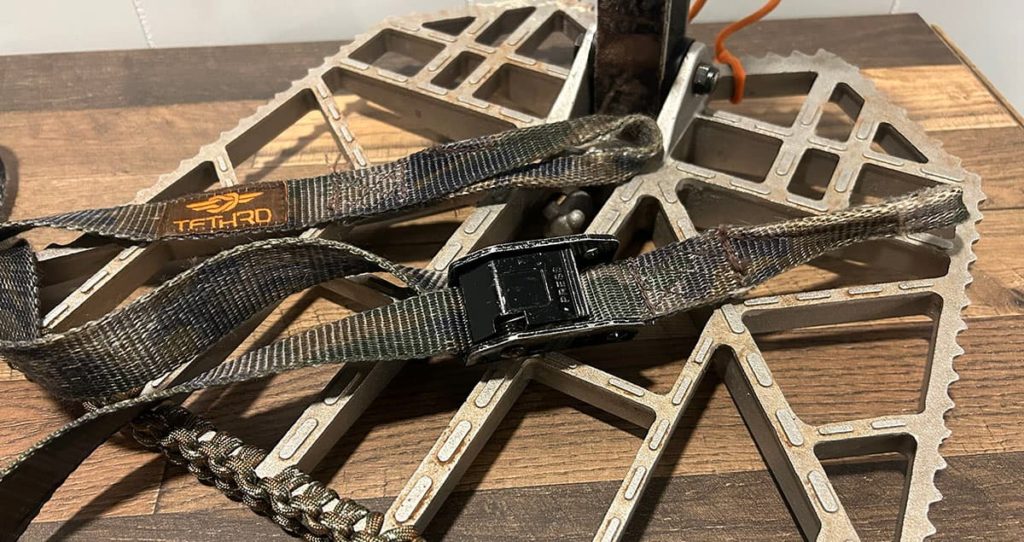
4. Take Things Slow
Last but certainly not least, the one true key to staying silent is to take your time and be methodical in your saddle hunting setup process.
You can do everything possible to silence your equipment but still slip up, bang something together, and get busted by a cautious buck if you’re not careful.
The best way to ensure your setup is smooth and noise-free, is to allow yourself plenty of time to get into your spot and to get set up. It should never feel rushed.
Slow is smooth, and smooth is fast. And more importantly, smooth is silent!
Having a system for setting up that you stick to every single time helps as well. Develop a routine that works for you and stick with it. Practice it in the off season until it becomes second nature.
If you take your time to do that, you could just about skip the other three steps. Those are more just insurance in case you slip up.
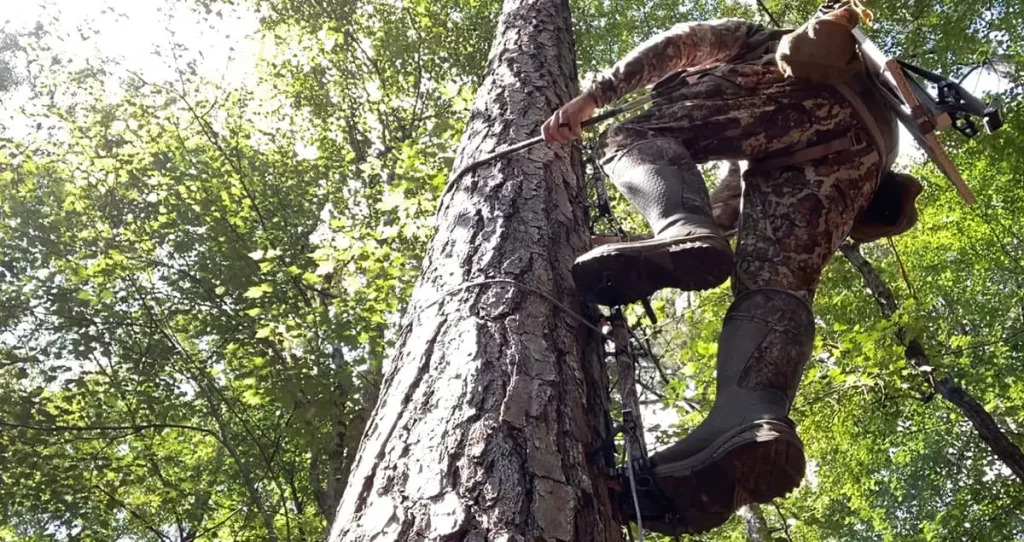
Final Thoughts
Deer hunting success is often found in the details, and one key detail is getting into your spot undetected. Use the tips above to silence your hunting gear, and develop a routine that minimizes the chance of making a mistake. If you do all that, you’ll be one step closer to putting your tag on that buck you’ve been after all season!
